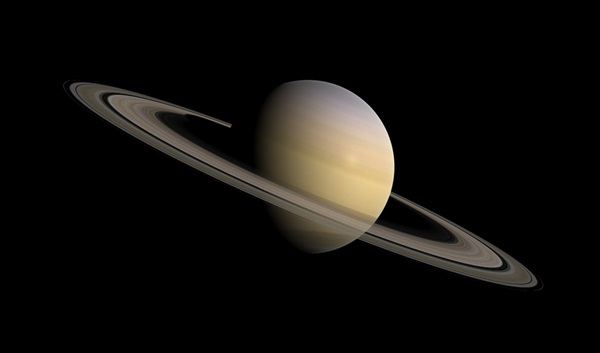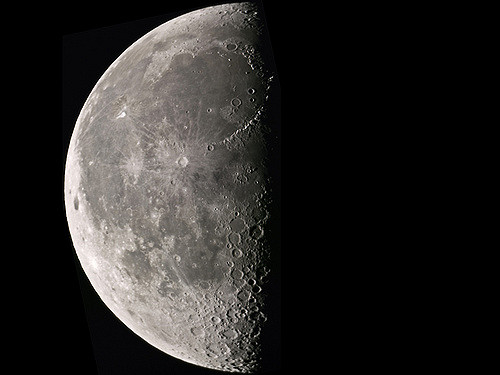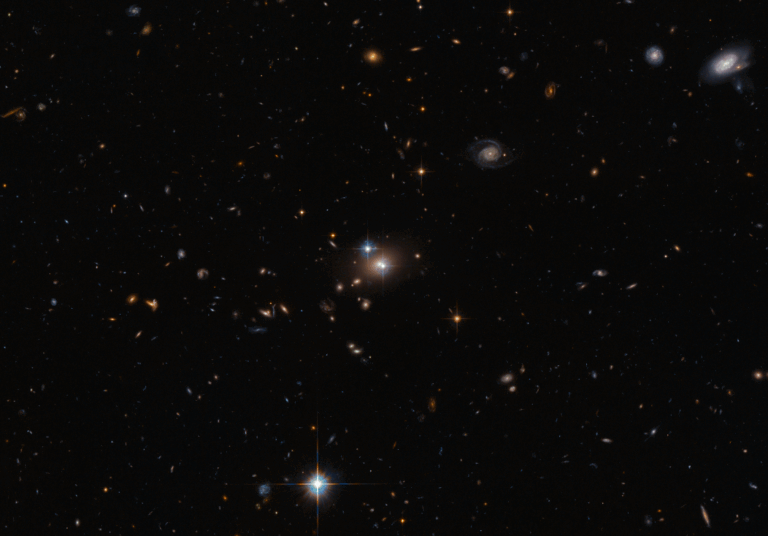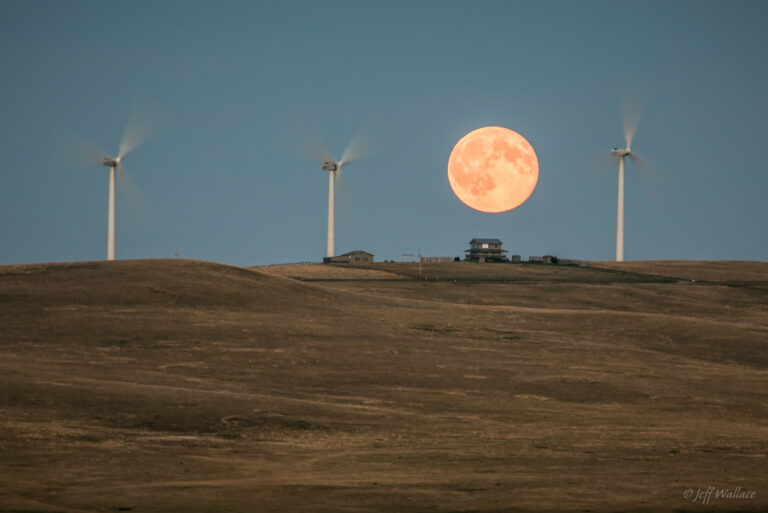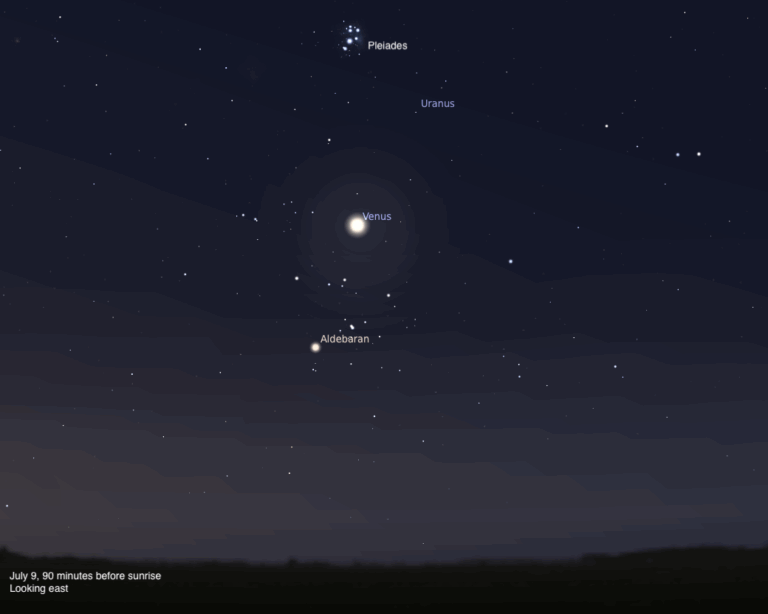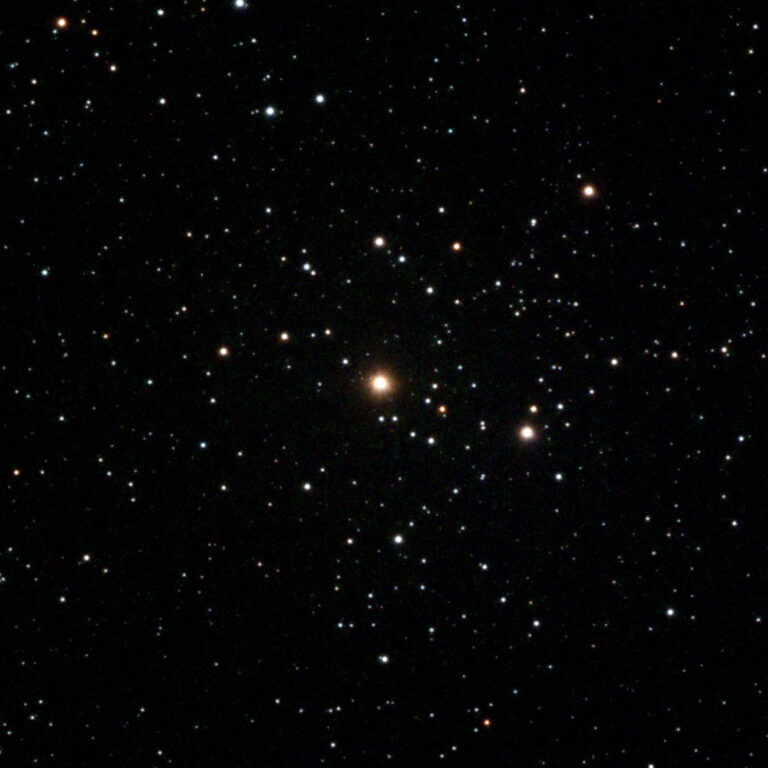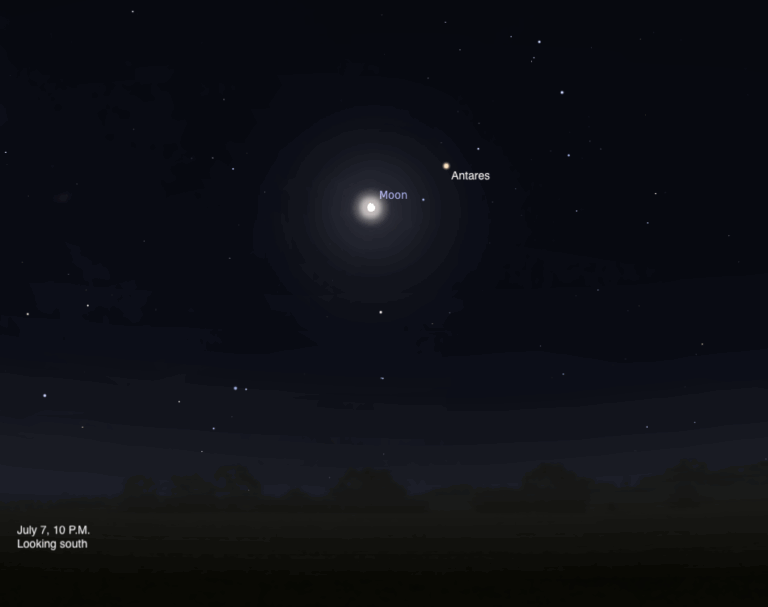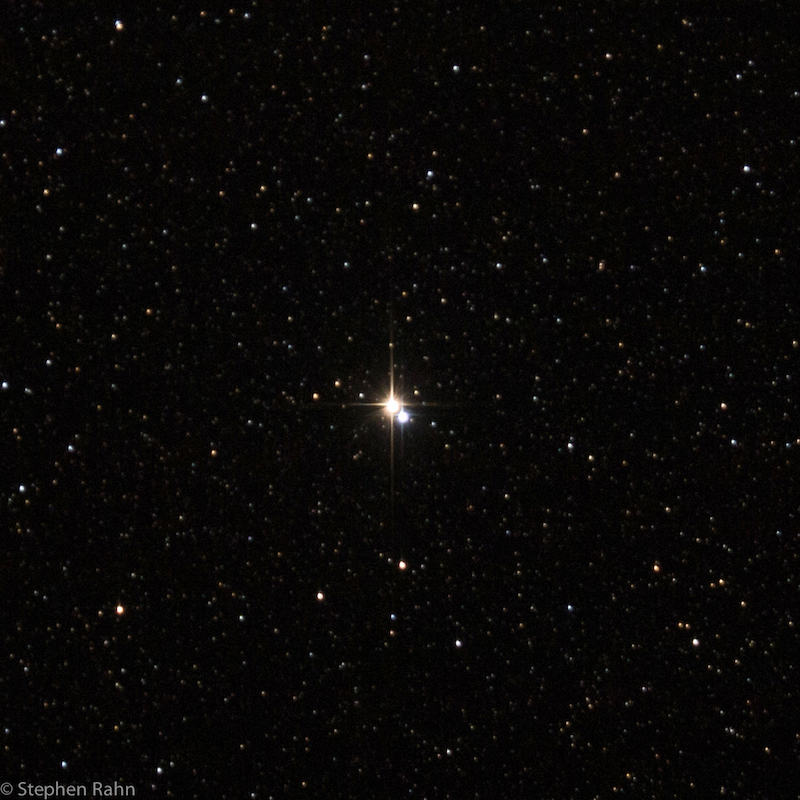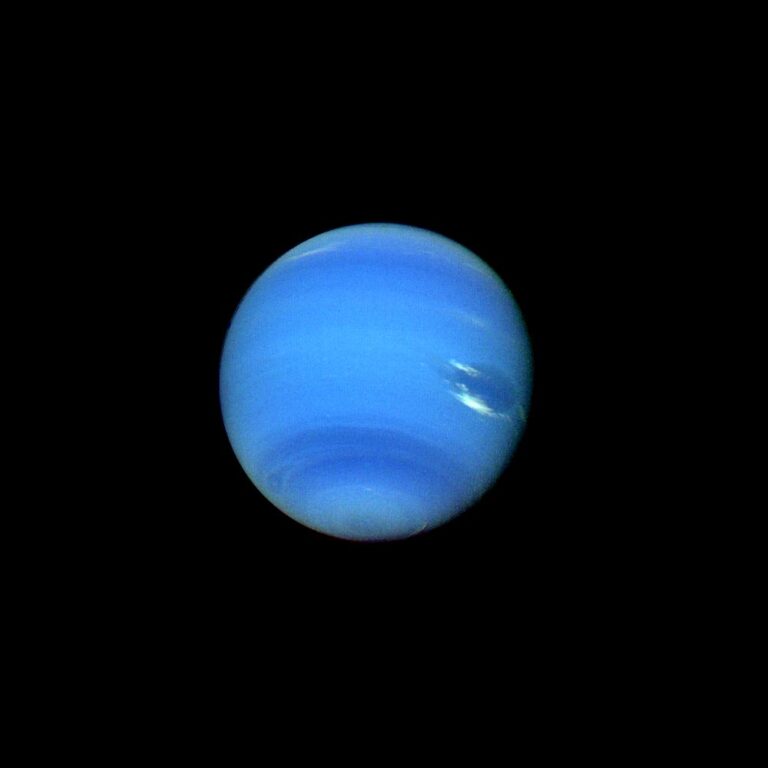Key Takeaways:
Friday, May 12
Although the calendar says May, the sky’s Summer Triangle returns to prominence this month. The asterism’s three bright stars — Vega in Lyra, Deneb in Cygnus, and Altair in Aquila — all clear the horizon by 11:30 p.m. local daylight time. An hour later, they rule the eastern sky. Vega shines brightest and appears at the apex of the triangular asterism. Look for Deneb to Vega’s lower left and Altair to the lower right of the other two. The Summer Triangle will grace the Northern Hemisphere’s evening sky from now through the end of the year.
The Moon reaches apogee, the farthest point in its orbit around Earth, at 3:51 p.m. EDT. It then lies 252,407 miles (406,210 kilometers) from Earth’s center.
Saturday, May 13
Saturn offers a visual treat all week. The ringed planet rises by 11 p.m. local daylight time and climbs some 30° above the southern horizon around 3 a.m. Tonight finds magnitude 0.2 Saturn in the company of the waning gibbous Moon, which appears some 3° to the planet’s left as the pair rises. When viewed through a telescope this week, Saturn shows an 18″-diameter disk surrounded by a spectacular ring system that spans 41″ and tilts 26° to our line of sight.
Sunday, May 14
Neptune rises around 3 a.m. local daylight time and appears low in the east-southeast before dawn. The distant world glows at magnitude 7.9, so you’ll need binoculars or a telescope to spot it. Fortunately, it lies near a brighter star that will guide you to the planet. This morning, Neptune passes 9′ due south of 6th-magnitude 81 Aquarii. The star shines some five times brighter than the planet. You can confirm your sighting of Neptune through a telescope, which reveals the planet’s 2.3″-diameter disk and blue-gray color.
Monday, May 15
Although Jupiter reached opposition and peak visibility more than a month ago, it remains a stunning sight nearly all night. It appears halfway from the southern horizon to the zenith by the time twilight fades to darkness around 10 p.m. local daylight time. The planet resides among the background stars of Virgo, some 10° northwest of the Maiden’s brightest star, 1st-magnitude Spica. When viewed through a telescope, Jupiter’s disk spans 42″ and shows a wealth of detail in its atmosphere.
Tuesday, May 16
Venus appears brilliant in the eastern sky from the time it rises around 4 a.m. local daylight time until close to sunrise nearly two hours later. It stands 10° above the horizon an hour before the Sun comes up. Shining at magnitude –4.6, it easily ranks as the night sky’s brightest light after the Moon. When viewed through a telescope this morning, Venus spans 30″ and appears about 40 percent lit.
Wednesday, May 17
Mercury reaches greatest elongation today, when it lies 26° west of the Sun and appears 4° above the eastern horizon 30 minutes before sunrise. To locate the innermost planet, scan the area to the lower left of Venus with binoculars. Mercury shines at magnitude 0.5 and should stand out with this optical aid, though you may have a hard time spying it against the twilight glow with your naked eye. Because the planet grows brighter during the next two weeks and doesn’t lose any altitude, you can follow it through the end of May.
Thursday, May 18
Last Quarter Moon occurs at 8:33 p.m. EDT. When it rises around 2 a.m. local daylight time tomorrow morning, it will appear a bit less than half-lit. Earth’s only natural satellite appears against the backdrop of Aquarius the Water-bearer.
Saturn starts today among the background stars of western Sagittarius but crosses the invisible border into Ophiuchus by day’s end. It will remain among the Serpent-bearer’s stars until November, when it moves back into Sagittarius.
Friday, May 19
The Big Dipper’s familiar shape lies nearly overhead on May evenings. The spring sky’s finest binocular double star marks the bend of the Dipper’s handle. Mizar shines at 2nd magnitude, some six times brighter than its 4th-magnitude companion, Alcor. Even though these two are not physically related, they make a fine sight through binoculars. (People with good eyesight often can split the pair without optical aid.) A small telescope reveals Mizar itself as double — and these components do orbit each other.
Saturday, May 20
Mars’ days as a prominent evening object are dwindling to a precious few. The Red Planet appears 10° high in the west-northwest 45 minutes after sunset and dips below the horizon shortly before 10 p.m. local daylight time. The magnitude 1.7 planet lies among the background stars of Taurus the Bull. Unfortunately, a telescope shows no detail on the ruddy world’s 4″-diameter disk.
Sunday, May 21
The sky’s brightest asteroid should be relatively easy to find through binoculars or a telescope this evening. Eighth-magnitude Vesta resides in the constellation Cancer the Crab just 3° north of the spectacular Beehive star cluster (M44). To confirm a sighting, sketch four or five stars in the field of view and then return to the same field a night or two later. Vesta will be the “star” that moved. And while you’re in the area, be sure to enjoy a view of the Beehive. You should be able to spot the cluster as a faint and fuzzy cloud with your naked eye. But M44 explodes into dozens of stars through binoculars or a small telescope at low power.

